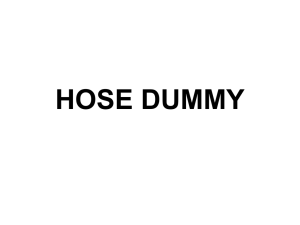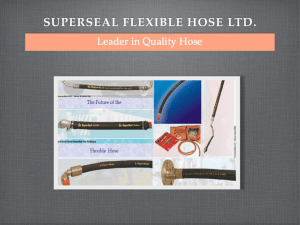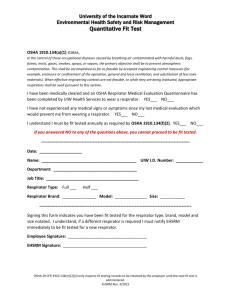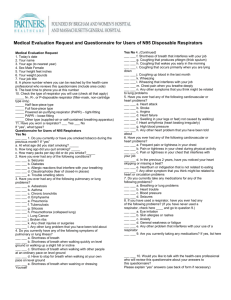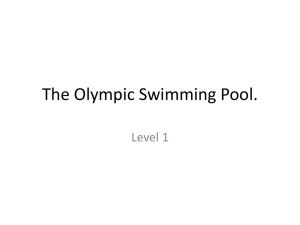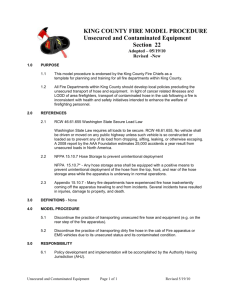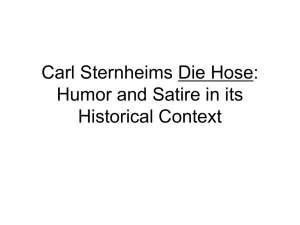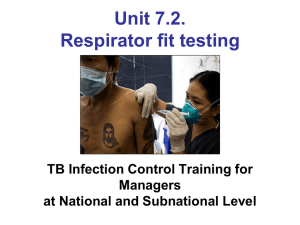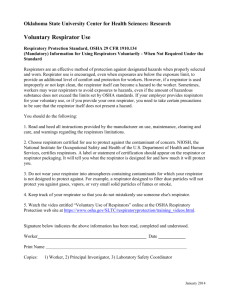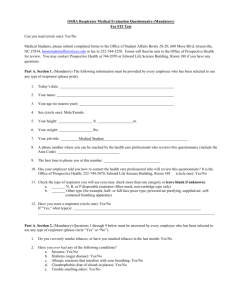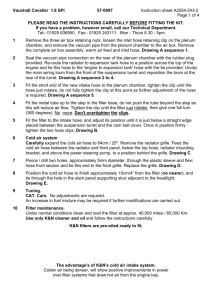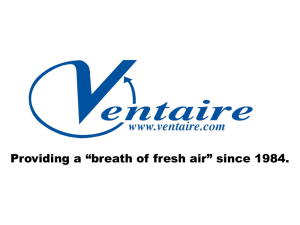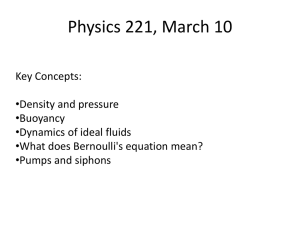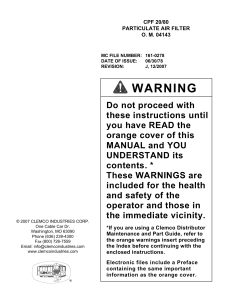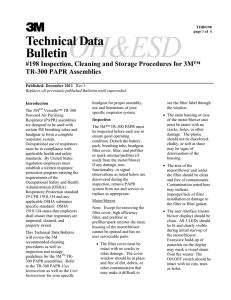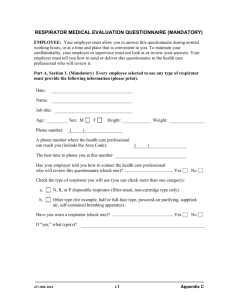AirMate (PAPR)
advertisement
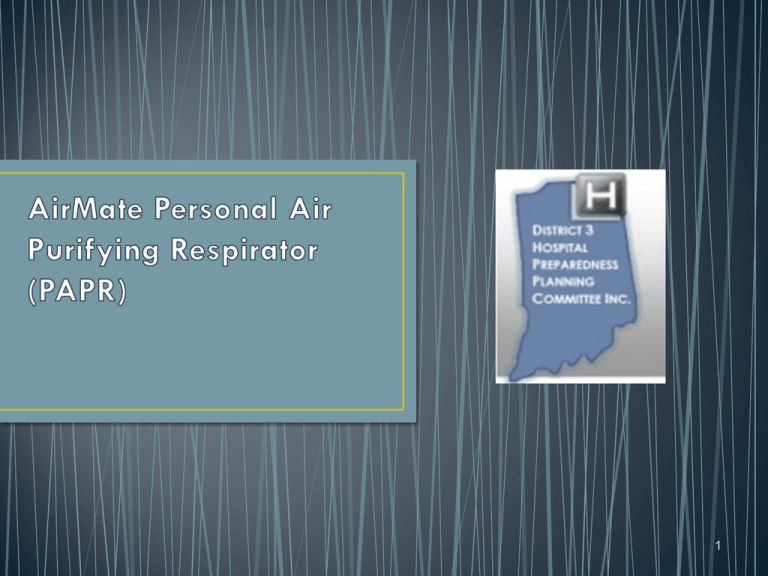
1 • The 3M manufactures 2 types of Powered Air Purifying Respirator (PAPR) to be worn to provide respiratory protection for those staff members who have not been successfully fit-tested using an N-95 respirator or to protect staff members from harmful chemicals. • The Air Mate is provided with a high efficiency particulate air (HEPA) filter that protects when providing care to patients with airborne precautions within isolation rooms. 2 • Regardless of the respirator you wear, you must be medically certified through Occupational Health Services prior to wearing any respirator. • Medical certification must occur for all respirator use, even though fit testing is not a requirement of the Air Mate 3 • You must have all of the pieces for the PAPR to work properly. Filter Motor Battery Hose Cone Mask Blower Belt Fan 4 • The breathing tube connects the head cover to the blower unit delivering clean filtered air through the top of the head cover and into the breathing zone of the wearer. • Air is exhausted around the edges of the head-cover and through the holes in the chin area of the head cover. • The PAPR is a positive pressure respirator, meaning that the head cover is always inflated, preventing harmful agents on the outside of the head cover from entering into the breathing zone. 5 • The battery should be charged after each use • Do not remove battery from blower assembly during recharge, simply plug charger into plug on blower assembly case • Fully charged batteries last 6-8 hours • An LED light will appear in “normal charge” mode 6 • All components, except head covers, can be reused (Head covers should be replaced after limited / single use) • The Hose is NOT disposable - Assure hose is firmly locked in place and is not kinked • Check head-cover assembly and hose before each use - look for holes, tears or abrasions • Remove protective paper from visor window before use • Safety goggles and surgery masks can be worn under the visor window for additional protection • Check air flow rate before attaching head cover to hose by suspending black cone in air-stream of hose (Cone should be suspended to the second line) 7 • Put on head cover assembly by pulling it over your head, visor facing forward (ears should not be covered) • Sizes are medium or large • Latex free • Issued individually to each wearer (Do not share head covers with co-workers.) • Obtain separate head cover for each patient (Do not take head covers from one patient isolation room to another.) • Can be paper bagged, and used by the same employee with the same patient for a number of times 8 When cleaning or decontaminating the PAPR: • Use antiseptic cleaning solution on outside case and hose (spray cloth then wipe to prevent damage to unit) • The HEPA filter can be used many times prior to replacing annually (Open date and expiration date is marked on filter.) • Replaced filter and rubber gasket when doing a filter change-out. (Make sure gasket is firmly seated before installing new filter) • Used filters are disposed of as biohazardous waste • Always store equipment in a clean, dry, area (Do not place unit in direct sunlight or near source of excessive heat.) 9 • Units are NOT flame resistant • Units will NOT provide protection from toxic gases • Units are NOT for use in situations where oxygen level is below 19.5% or greater than 23.5% by volume (On average, Indiana is 20.8% oxygen by volume) • Units are NOT for use in an atmosphere that is immediately dangerous to life and health (IDLH) (Poses an immediate threat to life, would cause irreversible adverse health effects, or would impair an individual’s ability to escape from a dangerous situation.) 10 11
